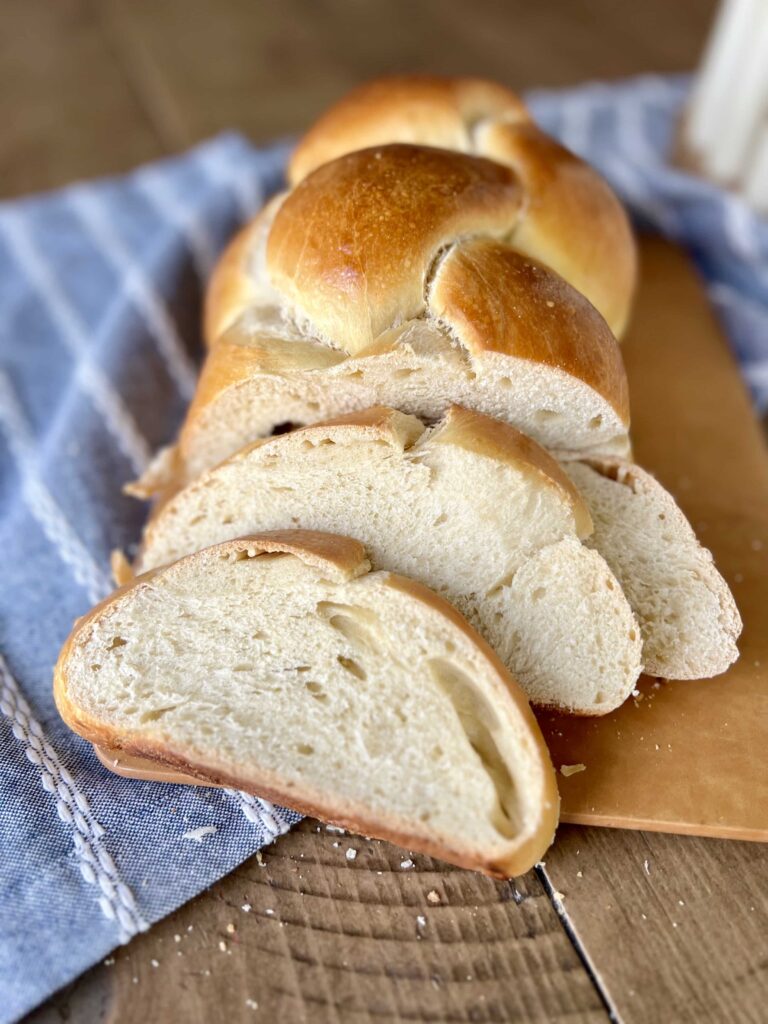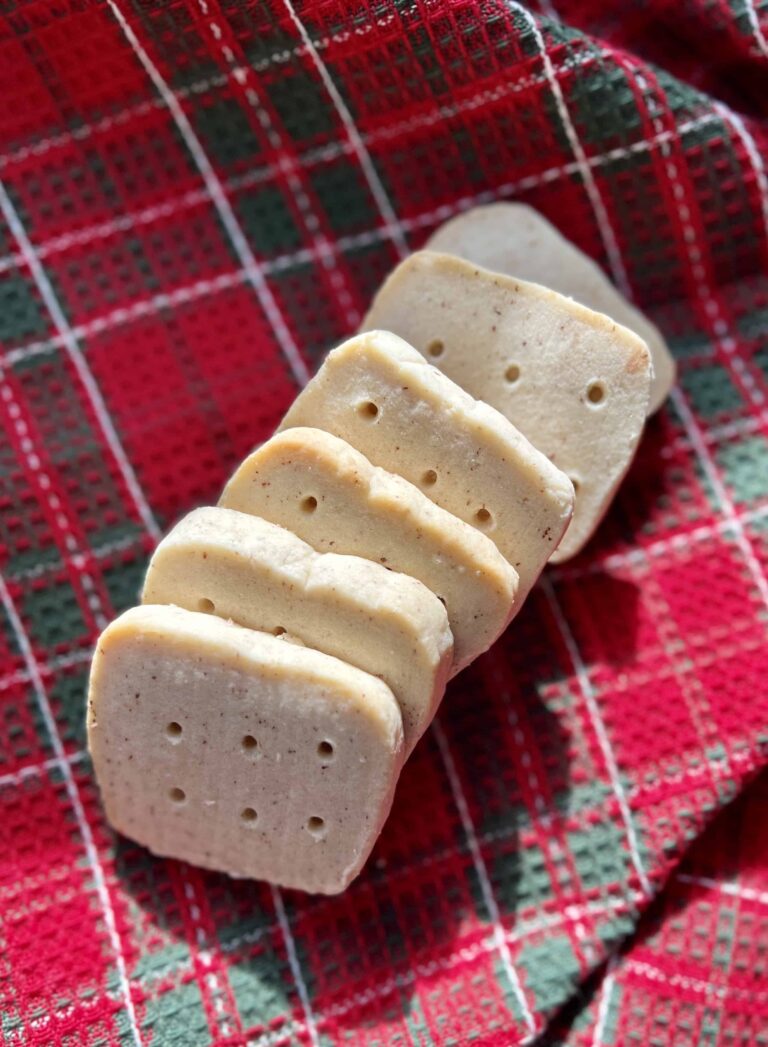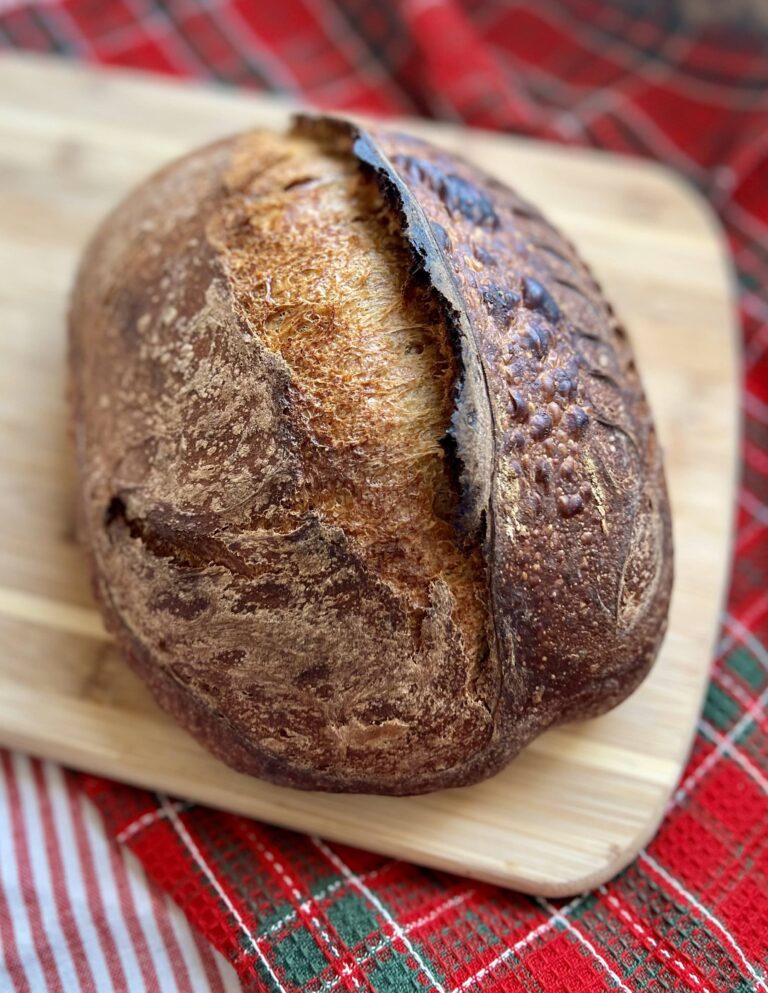The Best Sourdough Discard Sandwich Bread
This post may contain affiliate links. Please read our disclosure policy.Looking for a delicious way to repurpose your sourdough discard? Look no further than this exceptional sourdough discard sandwich bread recipe. Crafted with care, this light, fluffy, and super soft bread is the perfect solution for utilizing your excess sourdough discard. With the flexibility to adjust the tanginess according to your preference, you can bake two heavenly loaves of the best sourdough discard sandwich bread ever. From sandwiches to toast, this homemade bread will surpass any store-bought alternatives. Say goodbye to store-bought bread and say hello to the ultimate sourdough discard sandwich bread that will leave your taste buds craving more.

Ingredients in the Best Sourdough Discard Sandwich Bread
- Sourdough Discard: I use 100% hydration sourdough discard in discard recipes. You can also use fresh, bubbly sourdough starter or discard that’s been in your refrigerator for a week.
- Instant Yeast: This bread requires instant yeast to rise. If you want to use dry active yeast, make sure to activate it in some water/honey before incorporating into the dough. Check out this recipe if you want a natural yeast sandwich bread.
- Honey: Honey adds a sweetness to the dough. You could also substitute sugar.
- Coconut Oil: I love the soft texture coconut oil gives the dough. You can add cold or liquid coconut oil to the mixing bowl. The heat from the mixing will help the coconut oil absorb fully into the bread dough. You can substitute any neutral flavored oil.
- Egg: One large egg is about 50 grams. This recipe makes two loaves of bread; if you want to make one loaf instead, mix up the egg in a bowl and then use 25 grams in the recipe.
- Water: Warm water, around 95-100 degrees F helps activate the instant yeast and influences how quickly the dough will rise.
- Salt: Salt enhances flavor. Don’t forget to add it!
- Bread Flour: I use a good quality bread flour that I buy from my local mill. It’s around 12.5% protein content.


Why Use Instant Yeast in the Best Sourdough Discard Sandwich Bread?
Sometimes you just want an incredible way to use up some sourdough discard. This is the best sourdough discard sandwich bread. It uses discard that is stored in your refrigerator or you can substitute bubbly sourdough starter if you prefer. Older discard will give a more sour flavor to this bread and a fresher discard will have a less to nonexistent sour flavor. The main method of leavening in this bread is not through sourdough, but through instant yeast. It won’t have the same health benefits as a full, 100% sourdough loaf, but it is still delicious, homemade bread. If you choose to use dry active yeast instead of instant yeast, make sure you follow the steps to activate it before adding it to the recipe.


Mixing Sourdough Discard Sandwich Dough
To the bowl of a stand mixer, add the warm water, honey and instant yeast. Look for the yeast to give off a “yeasty” smell telling you that it is active and ready. Add the egg, coconut oil, salt, sourdough discard and bread flour and knead together for about 10 minutes until the dough is tacky and strong. Add a little more flour while mixing if needed. The dough will not be overly sticky. If you pinch off a chunk and roll it in your hands it should form a ball with little to no residue left on your fingers. Remove the dough to a bowl or container. Cover with a plastic shower cap or a kitchen towel and place in a warm place (75-80 degrees Fahrenheit) to rise for about an hour or until doubled in size.
Pro Tip: Warm water will help increase the activity of the instant yeast. Don’t go over 95 degrees F (temperature of baby’s bathwater) or else you could kill the yeast. Look for the yeast to smell “yeasty” when you add it to the liquid ingredients so you know it is active.



Bulk Rise for Sourdough Discard Sandwich Bread
This recipe for soft sourdough sandwich bread calls for two rises. The first rise, a “bulk” (unshaped) rise, takes place right after mixing the dough. The second rise takes place after the dough is shaped and it goes through a proving process. The first rise will take anywhere from 1-2 hours where the dough will double or triple in size. The amount of time it takes for the dough to rise is dependent on the temperature of the dough, but it will rise thanks to the instant yeast. Cover the dough and let it sit in a warm place until the dough has doubled in volume.
If you choose to use discard straight from the refrigerator, this can make the dough temperature cooler. Use warm water to encourage the dough to rise faster.


Shaping the Best Sourdough Discard Sandwich Bread
Punch down the dough and separate into two equal pieces, about 840 grams each. Prepare two loaf pans. Pat one of the portions out into a rectangle. Starting at the edge closest to you, roll up the dough. Take care to press in the dough at the seam after each roll and pinch the seam closed at the end. Pinch and round the ends of the dough just a bit to get a uniform loaf. Place in a greased 8.5-by-4.5 loaf pan and cover. Repeat with remaining portion of dough.







Proofing Sourdough Discard Sandwich Bread
Proof the loaves of bread for about 1-2 hours at warm room temperature (78-80ºF) Before baking this bread, make sure that the sandwich bread has risen up over the bread tin AND has filled out the tin. If your dough is colder, it will take longer. Gently press a finger into the dough and see if the dough springs back. If it springs back quickly, the bread needs to keep rising. If it springs back just a little, it’s time to bake.



Baking Sourdough Discard Sandwich Bread
Preheat the oven to 350 degrees. Bake sourdough discard sandwich bread for 40 minutes. The loaves will rise quite a bit in the oven. After 40 minutes, pull the loaves out of the oven and top with melted butter. After about 5 minutes, gently release them from the pans. Allow the loaves to cool completely before slicing and enjoy!




If you liked this recipe, you’ll also like..
- Soft Sourdough Sandwich Bread
- Whole Wheat Sourdough Sandwich Bread
- Honey Whole Wheat Sourdough Discard Sandwich Bread
- No Knead Beginner Sourdough Bread
- Sourdough Focaccia Bread
Frequently Asked Questions
This recipe is a great way to use up leftover sourdough discard so you don’t waste it. The older the discard, the more tang you will taste in this bread. If you use a young discard or bubbly sourdough starter the sour flavor will be minimal.
Slice the bread, put in a bread bag and store in the freezer.
Yes. I usually stick the dough in the fridge before shaping and then shape and proof a day or two later.
Yes, you can if you replace the sourdough discard with 200 grams of ripe and bubbly sourdough starter. I would recommend looking at this recipe for the best sourdough sandwich bread for details.



Sourdough Discard Sandwich Bread
Equipment
Ingredients
- 200 grams sourdough discard 100% hydration, see recipe notes
- 330 grams warm water around 95-100 degrees F
- 15 grams instant yeast about 1 Tablespoon
- 160 grams honey see recipe notes
- 50 grams coconut oil see recipe notes
- 1 large egg about 50 grams
- 20 grams salt
- 850 grams bread flour see recipe notes
Instructions
- Mix: To the bowl of a stand mixer, add the sourdough discard, instant yeast, warm water and honey. Look for the yeast to give off a “yeasty” smell telling you that it is active and ready. See recipe notes for using dry active yeast. Add the salt, egg, coconut oil and most of the flour. I like to reserve a little of the flour (a little less than a cup) and add it in as needed. Knead for 10-15 minutes until dough passes the windowpane test. The dough should pull away from the sides of the bowl or gather all together as it kneads. It will feel tacky to the touch, but should not be overly sticky. If it is very sticky, add a little bit more flour 10-20 grams at a time until it feels tacky and workable. This dough can also be kneaded about 10-20 minutes by hand.
- Bulk Rise: Transfer the dough to a large container and cover with a plastic shower cap (the best!) or kitchen towel. Let rise for about an hour or two until doubled in size. The warmer you keep the dough, the faster the dough will rise.
- Separate: Once the dough has doubled in size and is light and airy, punch the dough down and separate into two equal portions. Each portion is around 800 grams.
- Shape: Pat one of the portions out into a rectangle. Starting at the edge closest to you, roll up the dough. Take care to press in the dough at the seam after each roll and pinch the seam closed at the end. Pinch and round the ends of the dough just a bit to get a uniform loaf. Place in a greased 8.5-by-4.5 loaf pan and cover. Repeat with remaining portion of dough. You can watch a shaping video here.
- Rise: Let the bread rise in the pan until the dough has risen over the edge of the loaf pan. Keeping the dough at a warm temperature, around 85 degrees F will encourage the bread to rise more quickly. Press in gently on the dough with a finger. If the dough springs back immediately, it needs a little more time to rise. If it leaves a little indentation and springs back just a little bit, it is ready to bake.
- Bake: Pre-heat oven to 350 degrees. Bake loaves of bread for 40 minutes. Spread melted butter on the tops of the loaves if desired. Let bread cool completely before slicing for sandwiches. Enjoy!







I wonder if it’s an American thing as I found it ALOT of honey and sure enough the bread is ridiculously sweet to my taste. My dog has been a massive fan and begging for more so I might have to make small batch for him 🤭 he’s spoilt. Is the honey fir taste only? Can I reduce it substantially?
It is a lot of honey in this recipe. It balances the sour flavor so this bread definitely has a sweeter flavor and not so sour. I do think we tend to like our breads a bit sweeter in the U.S. You can reduce the honey by half with good results and probably even more than that, though I haven’t tried it that way.
I don’t have a stand mixer. can i mix this by hand?
Yes. You can mix this by hand.
I think I’ve failed myself on this one. I waited longer than the recommended timeframes but just didn’t see the same rise in my dough. I went forward with baking since I wasn’t sure what else to do and they are stubby loaves. Should I have just waited? I definitely don’t keep my house 80 degrees so I’m not sure what I could’ve done to speed up the process.
They probably needed more warmth. Find a warm appliance to set them on or your oven with the light turned on to help. With this recipe, make sure the instant yeast is active and it should rise – eventually, but may take a little bit longer if the discard is cold or your dough is cold.
Wondering if one of the loaves can be frozen and baked later? If so, at what point do you prep to freeze?
I don’t usually recommend doing this because the longer the dough sits in the freezer, the more yeast dies off and it doesn’t give as good of a rise. I would rather bake both loaves and then slice and freeze one of the baked loaves. If you do decide to freeze the dough, do it after the first rise.
What can I use instead of an egg? Thanks 🙏🏻
I would just leave it out. You may need to add a little extra flour to the bread dough to compensate.
Came out perfect. Will be keeping this recipe.
So glad you enjoyed this recipe!
I read the notes about the flour. I don’t have bread flour but I have all purpose as well as rye flour.
I was wondering if I could do half and half or would this change the composition of the bread to much ?
If you use rye flour, it will affect the texture and flavor of the bread dough. But it may still produce good bread – just may not rise quite as high. I would probably use all-purpose flour instead of the bread flour in this recipe if that’s what you have on hand.